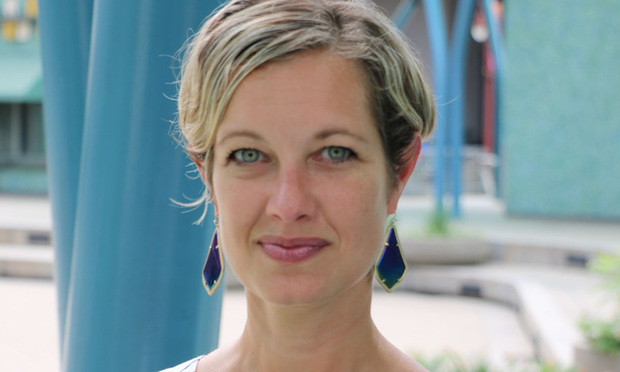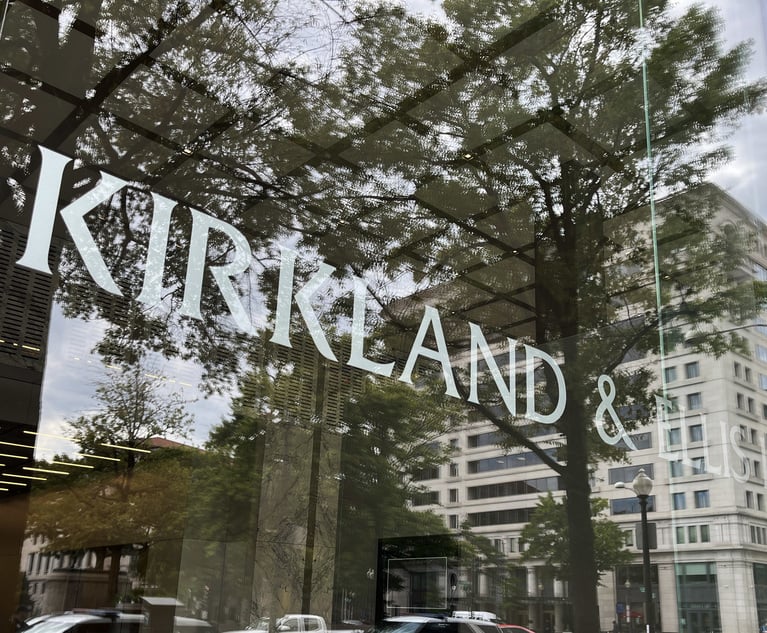The Time Is Now: A Call to Action for Leaders
COVID-19 has done what few incumbent leaders have managed to do: created a sense of urgency to ignite change. It is now the responsibility—nay, the obligation—of leaders to take advantage of this occasion.
July 23, 2020 at 12:07 PM
8 minute read
 Marcie Borgal Shunk.
Marcie Borgal Shunk.Smart Strategy
COVID-19 has done what few incumbent leaders have managed to do: created a sense of urgency to ignite change. It is now the responsibility—nay, the obligation—of leaders to take advantage of this occasion; to use this global pandemic and societal turmoil, which has wreaked havoc on the lives and livelihoods of so many, to make a positive, lasting impact on their organizations and the world.
The Principles of Leading Change
The first and, arguably, one of the most challenging steps in John Kotter's principles of leading change is to create a sense of urgency—a clear, emotionally charged need for transformation. Without it, change wilts on the vine. In times of plenty and in industries, like legal, energy or private equity, in which stakeholders enjoy generous rewards, it can be challenging, if not impossible, to create a sense of urgency. As a popular saying in the legal sector goes, "how do you convince a room full of millionaires they're doing something wrong?"
Yet for too many years this fallback has prevented people, firms, companies and entire societies from progressing. Advancement has been made by those at the outskirts of the establishment, upstarts and adventurers unencumbered by the way things have always been done. A group, very much in keeping with Kotter's principles, made up almost exclusively of a volunteer army— a team willing and able to spearhead transformation. And while large corporations have attempted to mimic this environment with R&D teams or Innovation Labs, the impact, on the whole, has been minimal at best.
Today, we are presented with a new prospect—a unique circumstance in which we suddenly are able to bear witness to the full range of possibilities, to see and experience in our own lives and in those around us why and how change could result in a better overall experience—and world. For the vast majority, that means hope—hope for the future. For those in leadership, it means a call to action. Leaders, worldwide, can use this energy as a platform for carving a new path forward.
So, Leaders, Where To Now?
The options for where to exploit this profound momentum are seemingly endless. Do leaders use this energy to reimagine the customer experience, to herald in a new era of virtual work and flexible talent pools, or to remold the fabric of our organizations to undo centuries of indirect (and direct) bias? Let's explore what this last option might look like in the context of our current situation.
Tackling Systemic Change to Create a Diverse and Inclusive Culture
The existence, creation and perpetuation of organizational culture lies in the ongoing interactions and communications between individuals. Every person within a company contributes to and helps to shape its culture. According to expert Daniel Coyle, as professionals engage with one another, they seek out "belonging cues," subtle indications as to whether they fit into a cultural framework. Simply, people want to feel safe. Safety is an underpinning of a healthy culture.
Traditional diversity and inclusion training programs often attempt to achieve improvement from a bird's eye view—to hire and promote diverse talent, to inform others of the definition and benefits of diversity or to teach people how to recognize unconscious bias. Yet few D&I programs have had a lasting, tangible impact. Their shortfall, in part, lies in their detachment from leadership and their limited influence on engaging the entire organization in meaningful cultural change (not to mention the reality that a single entity cannot be divorced entirely from that of culture as a whole).
Cultural transformation, like any major change initiative, demands ongoing, deliberate energy across the organization. With so many other goals competing for people's time and resources, it is easy for diversity to play second fiddle. Moreover, the lack of insight into how people are truly communicating with one another on a day-to-day basis is a limiting factor. An organization rarely measures or controls for "belonging cues" or "collisions"—casual opportunities to interact with others. Its metrics, instead, focus on outcomes—hires, promotions, compensation levels. Metrics proven to demonstrate ongoing discrepancies.
There are several ways to get ahead of diversity and invest in lasting change:
- Measure the Inputs: Belonging Cues and Collisions
Typically, organizations rely on employee surveys to assess employee engagement, cultural norms and a host of other cultural indicators. Some, such as Human Synergistics International, use these types of surveys to dig deeper into operational and organizational factors influencing culture such as job design, communication flows and goal-setting. Surveys of employees, however, have shortcomings. Response bias may influence results. Sensitive issues often remain undisclosed. Most importantly, respondent input does not necessarily reflect reality—a person's perception of how communications make them feel or affect others may not align with actual experience or behavior (see "On the Reality of Cognitive Illusions" by Kahneman and Tversky).
Enter a new technology. Rsquared.ai, a Silicon Valley upstart, has developed a tool to enable organizations to measure several of these critical cultural contributors—collaboration, inclusion, centrality—using artificial intelligence. Scanning actual email communication patterns and content, the technology enables companies to evaluate the INPUTS to an inclusive culture for the first time. This approach to evaluating D&I and cultural influences is new and, as such, untested. Yet its potential is great. It is the backbone of the newly launched Executive Institute on Inclusion.
- Strengthen People Skills
"The Expanding Role of Professional Development," a jointly produced report by The Tilt Institute and LawVision, recently revealed people skills and emotional intelligence are two of the areas in which law firm leaders are least prepared as they take on new roles. Law firms are not alone. A review of industry reports and glassdoor.com comments for companies in many sectors, including private equity, financial services, retail, health care and technology, indicate people skills may be wanting across the board. Global EQ trend-tracker, Six Seconds, reveals in their most recent "State of the Heart" report that EQ levels globally have declined from 2011 to 2017. Disheartening, though perhaps not all that surprising given the evidence.
Emotional intelligence and self-awareness are essential to creating better, more inclusive cultures. They provide the tools with which individuals learn to overcome challenges, civilly negotiate differences of opinion and elevate their performance. Plus, these investments have the benefit of aiding individuals personally and boosting their mental health. Whereas many organizations historically shied away from their role in helping employees cope with their emotional well-being, the past decade has ushered in an increased willingness to acknowledge and combat the problem, and alongside a generation of professionals who expect it.
- Educate the Leaders
In most organizations, the influence of a leader's or manager's interactions on culture is greater than others. People look to leaders as role models, for indicators as to how they should react or respond to their environment. Academic experiments have shown a single bad actor – someone who chooses not to participate, speaks negatively or makes others feel unwanted – can poison the interactions and productivity of an entire team. Imagine if this person was the leader.
Company investments in providing their people with adequate, ongoing, academic and practical training in leadership varies widely. Some are heralded for the priority they place while others, most law firms included, don't spend nearly enough time, money or energy to ensure those in command have the right resources and skills at their disposal to be successful. Shepherding in a new generation of thinkers, armed with the tools to influence change and help convert mindsets, is the charge of today's organizations—and the sooner the better. The circumstances today set the stage perfectly for a profound and lasting impact.
Taking a bold stand to redesign the cultural fabric is not the only opportunity afforded by the keen sense of urgency permeating daily lives. Today's conditions are ripe for jump-starting virtually any major undertaking to improve and evolve, whether personal or professional. Other potential high impact transformations include:
- Elevate the client experienceDevelop a leadership continuum
- Embrace profitability and efficiencies (pricing, technology, LPM)
- Reimagine for the remote workplace and culture
- Perfect succession and transition plans
A client told me of a recent inquiry in which he was asked, "how will you come out of COVID in a better place than where you started?" The answer is yours to define. The time is now. Seize the moment.
Marcie Borgal Shunk is president and founder of The Tilt Institute, a firm dedicated to unveiling new perspectives on law firm growth through intelligence, innovation and intuition. She specializes in helping law firm leaders make better, data-driven business decisions. Shunk is also a member of the ALM Intelligence Fellows Program.
More information on the ALM Intelligence Fellows Program can be found here.
This content has been archived. It is available through our partners, LexisNexis® and Bloomberg Law.
To view this content, please continue to their sites.
Not a Lexis Subscriber?
Subscribe Now
Not a Bloomberg Law Subscriber?
Subscribe Now
NOT FOR REPRINT
© 2025 ALM Global, LLC, All Rights Reserved. Request academic re-use from www.copyright.com. All other uses, submit a request to [email protected]. For more information visit Asset & Logo Licensing.
You Might Like
View All
Whether to Choose State or Federal Court in a Case Involving a Franchise?
5 minute read
Trump RTO Mandates Won’t Disrupt Big Law Policies—But Client Expectations Might
6 minute read
Kirkland Lands in Phila., but Rate Pressure May Limit the High-Flying Firm's Growth Prospects
5 minute readTrending Stories
- 1Buchalter Hires Longtime Sheppard Mullin Real Estate Partner as Practice Chair
- 2A.I. Depositions: Court Reporters Are Watching Texas Case
- 3Second DCA Greenlights USF Class Certification on COVID-19 College Tuition Refunds
- 435 Years After CT's Affordable Housing Act, Progress Remains a Struggle
- 5Bankruptcy Judge Clears Path for Recovery in High-Profile Crypto Failure
Who Got The Work
J. Brugh Lower of Gibbons has entered an appearance for industrial equipment supplier Devco Corporation in a pending trademark infringement lawsuit. The suit, accusing the defendant of selling knock-off Graco products, was filed Dec. 18 in New Jersey District Court by Rivkin Radler on behalf of Graco Inc. and Graco Minnesota. The case, assigned to U.S. District Judge Zahid N. Quraishi, is 3:24-cv-11294, Graco Inc. et al v. Devco Corporation.
Who Got The Work
Rebecca Maller-Stein and Kent A. Yalowitz of Arnold & Porter Kaye Scholer have entered their appearances for Hanaco Venture Capital and its executives, Lior Prosor and David Frankel, in a pending securities lawsuit. The action, filed on Dec. 24 in New York Southern District Court by Zell, Aron & Co. on behalf of Goldeneye Advisors, accuses the defendants of negligently and fraudulently managing the plaintiff's $1 million investment. The case, assigned to U.S. District Judge Vernon S. Broderick, is 1:24-cv-09918, Goldeneye Advisors, LLC v. Hanaco Venture Capital, Ltd. et al.
Who Got The Work
Attorneys from A&O Shearman has stepped in as defense counsel for Toronto-Dominion Bank and other defendants in a pending securities class action. The suit, filed Dec. 11 in New York Southern District Court by Bleichmar Fonti & Auld, accuses the defendants of concealing the bank's 'pervasive' deficiencies in regards to its compliance with the Bank Secrecy Act and the quality of its anti-money laundering controls. The case, assigned to U.S. District Judge Arun Subramanian, is 1:24-cv-09445, Gonzalez v. The Toronto-Dominion Bank et al.
Who Got The Work
Crown Castle International, a Pennsylvania company providing shared communications infrastructure, has turned to Luke D. Wolf of Gordon Rees Scully Mansukhani to fend off a pending breach-of-contract lawsuit. The court action, filed Nov. 25 in Michigan Eastern District Court by Hooper Hathaway PC on behalf of The Town Residences LLC, accuses Crown Castle of failing to transfer approximately $30,000 in utility payments from T-Mobile in breach of a roof-top lease and assignment agreement. The case, assigned to U.S. District Judge Susan K. Declercq, is 2:24-cv-13131, The Town Residences LLC v. T-Mobile US, Inc. et al.
Who Got The Work
Wilfred P. Coronato and Daniel M. Schwartz of McCarter & English have stepped in as defense counsel to Electrolux Home Products Inc. in a pending product liability lawsuit. The court action, filed Nov. 26 in New York Eastern District Court by Poulos Lopiccolo PC and Nagel Rice LLP on behalf of David Stern, alleges that the defendant's refrigerators’ drawers and shelving repeatedly break and fall apart within months after purchase. The case, assigned to U.S. District Judge Joan M. Azrack, is 2:24-cv-08204, Stern v. Electrolux Home Products, Inc.
Featured Firms
Law Offices of Gary Martin Hays & Associates, P.C.
(470) 294-1674
Law Offices of Mark E. Salomone
(857) 444-6468
Smith & Hassler
(713) 739-1250






